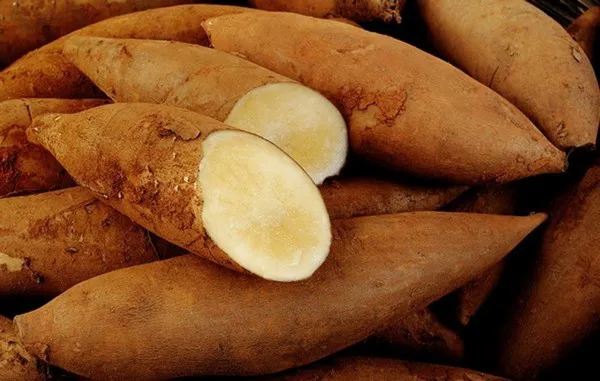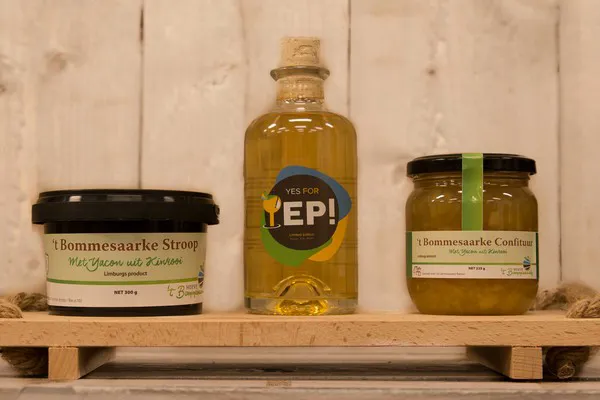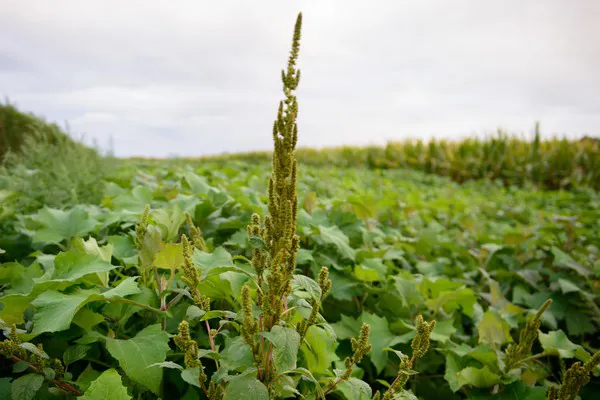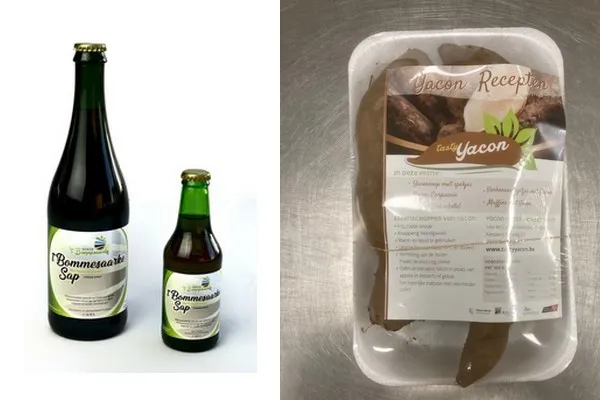Flemish yacóns; they still have a special ring to them. This tuberous plant originally comes from the Andes mountains of South America, but it turns out it thrives extremely well in Belgium. "This year they are again looking very nice, but sales still leave something to be desired," says Leo Henckens, the largest and one of the few growers of the yacón in Belgium.

The grower, who in addition to yacón also specializes in asparagus, started growing yacóns in 2016. "This is actually going very well. In March we plant them in pots in the greenhouses, after which we put the tuber in the open ground. We then start the new harvest in early November," Leo explains. "I do trial plantings regularly and I have noticed that the tuber really needs the dark days of October. That's when we have the nicest, thick tubers." The recent heat and drought have not bothered them, then. "Too much water is actually a bigger problem, because then they get smaller. This year, however, they look excellent."
The grower from Kinrooi, who has about 30 acres of the crop, will either store the harvest or process it into syrup or jam. "You have to deliver the best quality to keep people coming back for our yacóns. It is a relatively unknown crop and so the people's first impression should naturally be positive, but they are quite vulnerable to breaking. This means we have to treat them with velvet gloves."
This is how Leo keeps them until about the end of May. "Much longer is not really an option, as their quality would deteriorate too much. We try to process the broken tubers into syrup or jam as soon as possible. This is also easier for storage."

"When people taste them, they are always enthusiastic"
Selling the yacón, however, remains a difficult story. "The yacón has a fresh-sweet taste and a crunchy bite. Over the years there have been regular promotions for the product and people who taste them are actually always enthusiastic. The biggest problem, however, is convincing the trade, as it is they who have to pick the product up. There is some enthusiasm there, but it never really comes to fruition. That is why we sell a lot of our products through our farm store. We also had two difficult years because of the pandemic. Now, post-Covid, the time is ripe to bring the Flemish yacón into the spotlight again." 
Leo notices that word-of-mouth is the most effective method to do so. "As a result, two years ago we also started giving tours of the yacón fields in winter. With asparagus, we already noticed that this is the best way. Covid put a stop to that, however, so everything was put on the back burner for a while. People have to taste it, after which they become enthusiastic and come back. This winter, we'll be back at it in full force."
"It's really just a wonderful crop," Leo concludes enthusiastically. "It's so healthy and versatile. As indicated, we make jam and syrup from it, but we also have a caterer who makes soup from the yacón, adding pieces of bacon. We sell the soup in the vending machine at the farm store and it is very popular. But it also serves well in a salad or as a wok dish. It can even replace apples in apple pie. The only problem is that people first have to become familiar with it."

For more information: Leo Henckens
Leo Henckens
Hoeve 't Bommesaarke
Kessenicherweg 27
3640 Kinrooi, België
+32 494 87 17 91
info@aspergeskinrooi.be
www.aspergeskinrooi.be
www.tastyyacon.be
